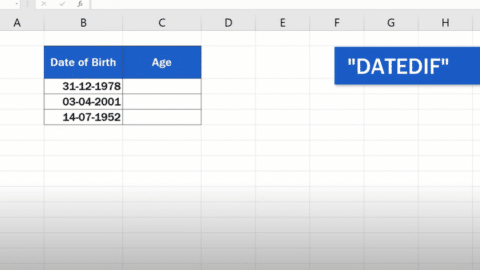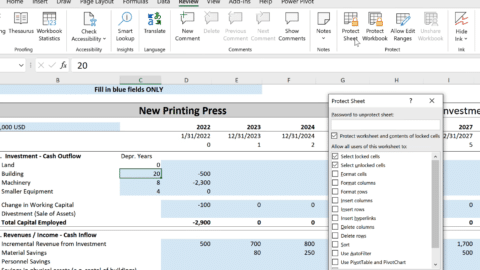At some point, you may have encountered a spreadsheet with blank cells that needed formatting. Perhaps it was a financial report, an inventory sheet, or a list of clients. Whatever the case, you may have felt the frustration of finding and selecting all the blank cells. Thankfully, there is an easy solution to this problem: conditional formatting.
Table of Contents
Understanding Conditional Formatting
Conditional formatting is a powerful tool in Excel that allows you to format cells based on specific criteria. With conditional formatting, you can highlight cells that meet certain conditions, such as blank cells. This can make it much easier to identify and work with the data in your spreadsheet.
In this article, we’ll show you how to apply conditional formatting to blank cells in Excel. By following our step-by-step guide, you’ll be able to quickly and easily format blank cells in your spreadsheets.
Conditional formatting is a powerful tool in spreadsheet applications like Microsoft Excel and Google Sheets that enables users to highlight data values based on specified conditions. Also, it is a time-saving feature that helps users to quickly identify important data trends, exceptions, and patterns, making it easier to analyze and understand complex data sets. In this article, we will discuss conditional formatting for blank cells and how it can be used to improve data analysis and presentation.
Blank cells are common in spreadsheet applications, and they can be caused by a variety of factors, such as missing data, data entry errors, or formatting issues. Blank cells can be problematic for data analysis because they can be easily overlooked, leading to inaccurate or incomplete analysis. However, conditional formatting can be used to highlight blank cells, making it easier to identify and analyze them.
Creating Conditional Formatting Rules for Blank Cells
To create a conditional formatting rule for blank cells, follow these steps:
- Select the range of cells that you want to apply the rule to.
- Click on the “Conditional Formatting” button in the “Home” tab of the ribbon.
- Select “New Rule” from the drop-down menu.
- In the “New Formatting Rule” dialog box, select “Format only cells that contain” under “Select a Rule Type”.
- In the “Format only cells with” drop-down list, select “Blanks”.
- Click on the “Format” button to specify the formatting options for the blank cells.
- Click on “OK” to apply the rule.
You can choose from a variety of formatting options, such as font color, background color, borders, and font style, to make the blank cells stand out. You can also add custom formatting options by selecting the “Custom Format” option in the “Format Cells” dialog box.
Using Conditional Formatting for Blank Cells in Data Analysis
Conditional formatting for blank cells can be used in a variety of data analysis scenarios. Here are some examples:
- Identifying Missing Data: If you have a data set with missing data, conditional formatting can highlight the blank cells, making it easier to identify which data points are missing.
- Tracking Changes: If you have a data set that is updated regularly, conditional formatting can be used to highlight new or changed data points, including blank cells that have been filled in.
- Analyzing Survey Responses: If you have a survey with multiple-choice questions, conditional formatting can be used to highlight blank cells that represent unanswered questions, making it easier to identify which questions were not answered.
- Creating Heat Maps: Conditional formatting can create heat maps that visualize data trends and patterns. For example, you can use a gradient fill to highlight blank cells based on the value of the adjacent cells, creating a color-coded heat map that highlights data trends.
Step 1: Select the Range of Cells
The first step in applying conditional formatting to blank cells is selecting the range of cells you want to format. To do this, click and drag your mouse over the cells you want to format. Alternatively, you can click on the first cell in the range, hold down the Shift key, and then click on the last cell.
Step 2: Open the Conditional Formatting Dialog Box
Once you have selected the range of cells, open the Conditional Formatting dialog box. Also, to do this, click on the “Conditional Formatting” button in the “Styles” group on the “Home” tab of the ribbon. Then, select “Highlight Cell Rules” and “Blank Cells…” from the dropdown menu.
Step 3: Choose a Formatting Option
After you’ve opened the Conditional Formatting dialog box, you’ll see a list of formatting options. Also, you can apply any of these options to the blank cells in your selected range. For example, you might want to fill the blank cells with a specific color or apply a bold font to the cells.
Conclusion
Conditional formatting for blank cells is a powerful tool that can be used to improve data analysis and presentation. By highlighting blank cells, users can quickly identify missing data, track changes, analyze survey responses, and create heat maps that visualize data trends and patterns. With a variety of formatting options available, users can customize the appearance of the blank cells to suit their specific needs. Whether you are a beginner or an advanced user, conditional formatting for blank cells is a feature that can help you save time and improve the accuracy of your data analysis.
FAQ About Conditional Formatting for Blank Cells
Q: What is conditional formatting in Excel?
A: Conditional formatting is a feature in Excel that allows you to automatically apply formatting to cells based on certain conditions. For example, you can highlight cells that contain a certain value, or apply formatting to cells that meet a specific criteria.
Q: How do I apply conditional formatting to blank cells in Excel?
A: To apply conditional formatting to blank cells in Excel, follow these steps:
- Select the range of cells that you want to apply the formatting to.
- Click on the “Home” tab in the Excel ribbon.
- Click on “Conditional Formatting” in the “Styles” section.
- Choose “New Rule” from the drop-down menu.
- In the “New Formatting Rule” dialog box, select “Format only cells that contain” and then select “Blanks” from the drop-down menu.
- Choose the formatting you want to apply to the blank cells (e.g. fill color, font color, etc.).
- Click “OK” to apply the formatting to the selected cells
Hello, I’m Cansu, a professional dedicated to creating Excel tutorials, specifically catering to the needs of B2B professionals. With a passion for data analysis and a deep understanding of Microsoft Excel, I have built a reputation for providing comprehensive and user-friendly tutorials that empower businesses to harness the full potential of this powerful software.
I have always been fascinated by the intricate world of numbers and the ability of Excel to transform raw data into meaningful insights. Throughout my career, I have honed my data manipulation, visualization, and automation skills, enabling me to streamline complex processes and drive efficiency in various industries.
As a B2B specialist, I recognize the unique challenges that professionals face when managing and analyzing large volumes of data. With this understanding, I create tutorials tailored to businesses’ specific needs, offering practical solutions to enhance productivity, improve decision-making, and optimize workflows.
My tutorials cover various topics, including advanced formulas and functions, data modeling, pivot tables, macros, and data visualization techniques. I strive to explain complex concepts in a clear and accessible manner, ensuring that even those with limited Excel experience can grasp the concepts and apply them effectively in their work.
In addition to my tutorial work, I actively engage with the Excel community through workshops, webinars, and online forums. I believe in the power of knowledge sharing and collaborative learning, and I am committed to helping professionals unlock their full potential by mastering Excel.
With a strong track record of success and a growing community of satisfied learners, I continue to expand my repertoire of Excel tutorials, keeping up with the latest advancements and features in the software. I aim to empower businesses with the skills and tools they need to thrive in today’s data-driven world.
Suppose you are a B2B professional looking to enhance your Excel skills or a business seeking to improve data management practices. In that case, I invite you to join me on this journey of exploration and mastery. Let’s unlock the true potential of Excel together!
https://www.linkedin.com/in/cansuaydinim/





![Mastering VBA ReDim: VBA ReDim Cheat Sheet PDF! [2024]](https://www.projectcubicle.com/wp-content/uploads/2024/03/Mastering-VBA-ReDim-VBA-ReDim-Cheat-Sheet-PDF-2024-480x270.png)



